Filter by
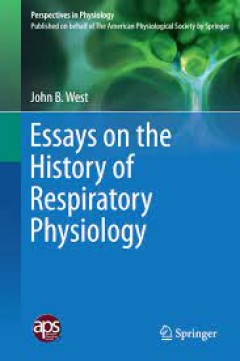
Essays on the History of Respiratory Physiology
This book consists of 23 essays about prominent people and events in the history of respiratory physiology. It provides a first-hand chronicle of the advancements made in respiratory physiology starting with Galen and the beginnings of Western physiology. The volume covers every aspect of the evolution of this important area of knowledge: pulmonary circulation, Boyle’s Law, pulmonary capillar…
- Edition
- -
- ISBN/ISSN
- 978-1-4939-2362-5
- Collation
- 115 b/w illustrations, 14 illustrations in colour
- Series Title
- -
- Call Number
- -
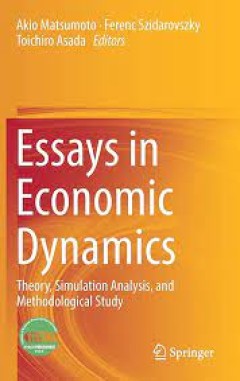
Essays in Economic Dynamics Theory, Simulation Analysis, and Methodological …
This book reflects the state of the art in nonlinear economic dynamics, providing a broad overview of dynamic economic models at different levels. The wide variety of approaches ranges from theoretical and simulation analysis to methodological study. In particular, it examines the local and global asymptotical behavior of both macro- and micro- level mathematical models, theoretically as well a…
- Edition
- -
- ISBN/ISSN
- 978-981-10-1521-2
- Collation
- 79 b/w illustrations
- Series Title
- -
- Call Number
- -
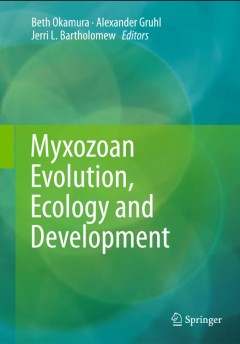
Myxozoan Evolution, Ecology and Development
This book provides an up-to-date review of the biology of myxozoans, which represent a divergent clade of endoparasitic cnidarians. Myxozoans are of fundamental interest in understanding how early diverging metazoans have adopted parasitic lifestyles, and are also of considerable economic and ecological concern as endoparasites of fish. Synthesizing recent research, the chapters explore issues …
- Edition
- 1
- ISBN/ISSN
- 978-3-319-14752-9
- Collation
- XIII, 441
- Series Title
- -
- Call Number
- -

The Vertebrate Integument Volume 2 Structure, Design and Function
The emphasis in this volume is on the structure and functional design of the integument. The book starts with a brief introduction to some basic principles of physics (mechanics) including Newton’s Three Laws of Motion. These principles are subsequently used to interpret the problems animals encounter in motion. It is in only the last 40 or so years that we have begun to understand how imp…
- Edition
- -
- ISBN/ISSN
- 978-3-662-46005-4
- Collation
- -
- Series Title
- -
- Call Number
- -

The Traditional Ecological Knowledge of the Solega A Linguistic Perspective
This book covers the ethnobiology and traditional ecological knowledge (TEK) of the Solega people of southern India. Solega TEK is shown to be a complex, inter-related network of detailed observations of natural phenomena, well-reasoned and often highly accurate theorizing, as well as a belief system, derived from cultural norms, regarding the relationships between humans and other species on t…
- Edition
- -
- ISBN/ISSN
- 978-3-319-24681-9
- Collation
- -
- Series Title
- -
- Call Number
- -
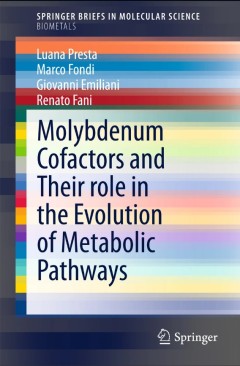
Molybdenum Cofactors and Their role in the Evolution of Metabolic Pathways
In this brief, the authors explore and review the current knowledge regarding the role of molybdenum in the evolution of biological systems and their interaction with biogeochemical cycles. Special emphasis is placed on biological nitrogen fixation and the nitrogen element cycle. The origin and evolution of molybdenum cofactor biosynthetic pathways as well as the evolutionary significance of…
- Edition
- 1
- ISBN/ISSN
- 978-94-017-9971-3
- Collation
- VI, 75
- Series Title
- SpringerBriefs in Molecular Science
- Call Number
- -
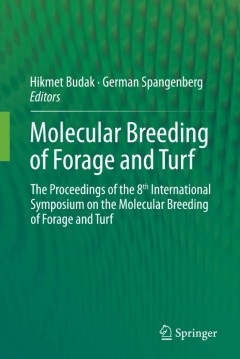
Molecular Breeding of Forage and Turf
This proceeding covers all the collected research data and presentations from the 8th International Symposium on the Molecular Breeding of Forage and Turf. The book explores themes in molecular breeding of forage and turf, including abiotic and biotic stresses, bioenergy and biorenewables, comparative genomics, emerging tools for forage and turf research, functional genetics and genomics and ge…
- Edition
- 1
- ISBN/ISSN
- 978-3-319-08713-9
- Collation
- XIII, 194
- Series Title
- -
- Call Number
- -
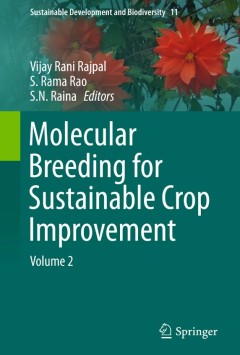
Molecular Breeding for Sustainable Crop Improvement
The world population is estimated to reach to more than 10 billion by the year 2050. These projections pose a challenging situation for the agricultural scientists to increase crops productivity to meet the growing food demands. The unavailability and/or inaccessibility to appropriate gene pools with desired traits required to carry out genetic improvement of various crop species make th…
- Edition
- 1
- ISBN/ISSN
- 978-3-319-27088-3
- Collation
- XI, 478
- Series Title
- Sustainable Development and Biodiversity
- Call Number
- -

The Science of Human Evolution
This textbook provides a collection of case studies in paleoanthropology demonstrating the method and limitations of science. These cases introduce the reader to various problems and illustrate how they have been addressed historically. The various topics selected represent important corrections in the field, some critical breakthroughs, models of good reasoning and experimental design, and im…
- Edition
- -
- ISBN/ISSN
- 978-3-319-41585-7
- Collation
- -
- Series Title
- -
- Call Number
- -

Between Two Plenums : China’s Intraleadership Conflict, 1959–1962
The origins of the Cultural Revolution are still shrouded in uncertainty. Crucial questions either remain unanswered or have been given answers which derive from conflicting interpretations. To what period can the direct origins of the Cultural Revolution be traced? What issues, if any, divided the leadership, and how deep were these divisions? What was the state of power relations and what was…
- Edition
- -
- ISBN/ISSN
- 9780472902132
- Collation
- -
- Series Title
- -
- Call Number
- 951 JOF b
 Computer Science, Information & General Works
Computer Science, Information & General Works  Philosophy & Psychology
Philosophy & Psychology  Religion
Religion  Social Sciences
Social Sciences  Language
Language  Pure Science
Pure Science  Applied Sciences
Applied Sciences  Art & Recreation
Art & Recreation  Literature
Literature  History & Geography
History & Geography